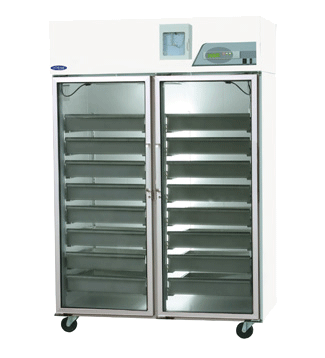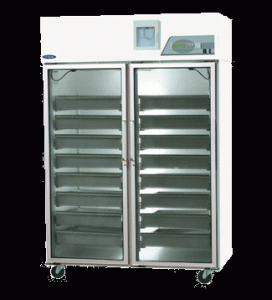
How to Choose a Blood Bank Refrigerator

Nor-Lake’s two-door blood bank refrigerator shows the LCD panel top right and the temperature recording chart on the top
Calls for blood donors often intensify after local or regional disasters as public safety responders and healthcare facilities seek additional supplies from local blood banks. A blood bank refrigerator performs an important function in maintaining the safety of blood according to regulations by the Food and Drug Administration’s (FDA) Center for Biologics Evaluation and Research (CBER). Other standards organizations include the American Association of Blood Banks (ABBA) and the American Red Cross.
Section (h) of the FDA’s 21CFR640.4 relates to the storage of blood immediately following collection. It states that unless the blood is to be used for platelets it should be placed in storage at temperatures of 1 to 6˚C (39 to 43˚F).
What to look for in a blood bank refrigerator
Blood bank refrigerators come in several sizes such as the single-, two- and three-glass door models manufactured by Nor-Lake and available from Tovatech. Glass panels allow lab technicians to easily determine supplies without subjecting contents to a temperature change by opening the door.
The heavy-duty top-mounted refrigeration system is factory pre-set to 4˚C (39˚F), well within the recommended storage range for whole blood. These units are microprocessor controlled with an LCD panel message center providing continuous content temperature display that is also recorded on chart paper. Variations outside the pre-set product storage temperatures are signaled by audio and visual alarms. Alarm records are automatically generated with a date and time stamp and stored in a non-volatile flash memory. A power outage alarm and an adjustable time delay door-ajar alarm are other product safety features. Additional protection is provided by door locks and two levels of password protection.
These floor-model heavy-duty blood bank refrigerators come equipped with 8 stainless steel pull-out shelves per door. Also available from Tovatech are undercounter blood bank refrigerators compliant with the AABB, ANRC and FDA requirements.
——————-
What size blood bank refrigerators do you have in your facility? What procedures for blood storage do you follow?
